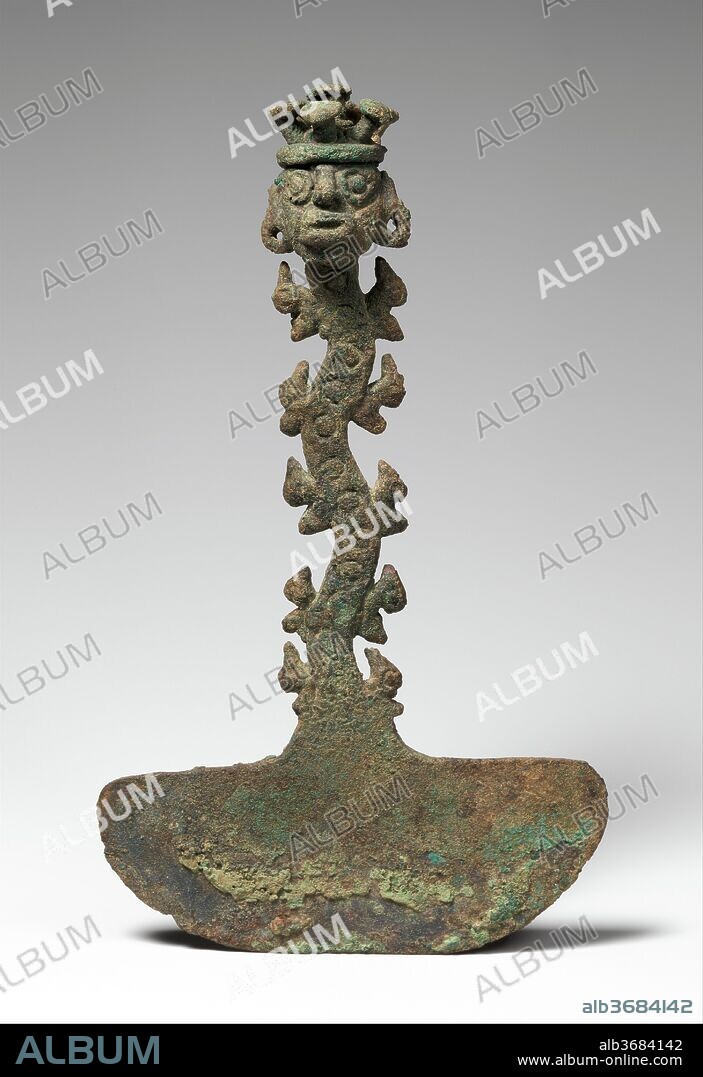alb3684142
Ceremonial Knife (Tumi)

|
Añadir a otro lightbox |
|
Añadir a otro lightbox |



¿Ya tienes cuenta? Iniciar sesión
¿No tienes cuenta? Regístrate
Compra esta imagen.
Selecciona el uso:

Título:
Ceremonial Knife (Tumi)
Descripción:
Ver traducción automática
Ceremonial Knife (Tumi). Culture: Chimú. Dimensions: H. 5 13/16 in. (14.8 cm). Date: 12th-15th century.
The Moche people of northern Peru (first-seventh century) were among the first to use copper, often with the addition of arsenic to harden the metal and improve the quality of the cast. Moche metalworkers hammered most of their precious metals--gold and silver--into objects of sheet metal, but many works in copper were cast by the lost-wax technique. The Chimú people, who made this ceremonial knife, inherited the rich cultural and artistic traditions developed by the earlier Moche. Clearly a ritual object, indicated by the delicate, projecting details and attractive silhouette, the knife has a semicircular blade. The flat undulating shaft is embellished with circles in relief; stylized birds project from its sides. At the top is a human head wearing a headdress with mushroom shapes. The detailed facial features--wide staring eyes and open mouth framed by age wrinkles--give the face a startled look. The holes in the earlobes once held ornaments. The object is cast of a copper/arsenic alloy; its surface is now covered with copper corrosion developed over many centuries of burial.
Técnica/material:
COBRE
Museo:
Metropolitan Museum of Art, New York, USA
Crédito:
Album / Metropolitan Museum of Art, NY
Autorizaciones:
Modelo: No - Propiedad: No
¿Preguntas relacionadas con los derechos?
¿Preguntas relacionadas con los derechos?
Tamaño imagen:
2908 x 4234 px | 35.2 MB
Tamaño impresión:
24.6 x 35.8 cm | 9.7 x 14.1 in (300 dpi)
Palabras clave:
 Pinterest
Pinterest Twitter
Twitter Facebook
Facebook Copiar enlace
Copiar enlace Email
Email
